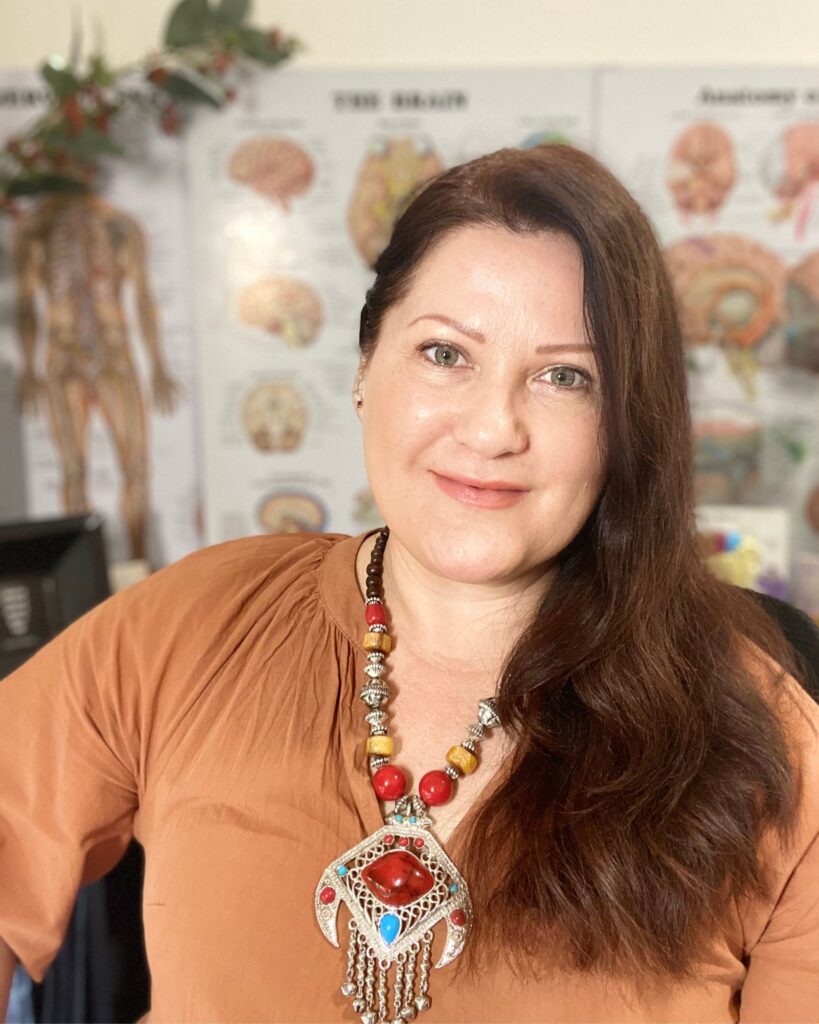In childhood, witnessing healthy conflict resolution is foundational for building emotional resilience in adulthood. Childhood conditioning shapes our nervous system and informs the messages we receive about love, behaviour, and acceptance.
Children’s nervous systems are incredibly sensitive to their environment. They are constantly attuning to the emotional cues of their caregivers, observing how adults handle stress, disagreements, and intense emotions. This in turn influences whether or not children learn a roadmap for handling stress, conflict, big feelings, and their own emotional states.
How parents or caregivers navigate disagreements, tensions, or conflicts (rupture) and the way they model reconciliation and understanding (repair) deeply impacts a child’s emotional and nervous system development.
The ability to self-regulate, or else become dysregulated, is often rooted in early childhood experiences, shaped by the subtle, everyday interactions that occur in the family unit. When children witness adults navigating moments of tension – whether through raised voices or moments of withdrawal – their own nervous systems can mirror this experience.
This is where nervous system regulation becomes vital.
Regulation involves recognising symptoms of stress activation and using techniques to acknowledge, move through and complete the stress response. This allows us to build capacity for distress while strengthening our ability to return to a calm, balanced state i.e. regulation.
In contrast, dysregulation occurs when stress overwhelms the system leading to emotional outbursts, overwhelm, and anxiety. Our system becomes stuck in activation and our ability to self-regulate is compromised.
When adults show children how to regulate their emotions after a rupture, they model an essential life skill: the ability to return to a state of calm after a period of distress.
It’s not about never experiencing tension; it’s about how we respond to it. The repair phase following a disagreement is an essential part of this process. Children learn that conflicts can be resolved, relationships can be restored, and emotions can be processed in healthy ways.
If children only see rupture – without the repair – they may internalise a sense of instability or fear that conflict means disconnection, reinforcing a cycle of nervous system dysregulation.
However when rupture is followed by visible repair, children can learn resilience, connection, and the value of emotional restoration. Fear is restored with safety.
The Messages and Meanings We Communicate
Every rupture in a relationship carries implicit messages to children. It’s not the argument itself that determines their understanding but the emotional context and how the conflict is addressed afterward.
Children are constantly interpreting adult interactions to make sense of their world and their place within it.
If a rupture is left unresolved, children may learn damaging messages such as:
- Conflict equals disconnection (leading to anxiety around arguments).
- Disagreements are dangerous (creating a fear of healthy conflict).
- Love is conditional upon behaviour (leaving them questioning their self-worth).
On the other hand, when repair follows rupture, the messages can be much more empowering:
- It’s okay to feel angry or upset (normalising emotions).
- Conflict can lead to greater understanding (promoting emotional resilience).
- Love remains intact despite disagreements (reinforcing security and unconditional love).
The Child Versus the Behaviour
It’s highly important for parents and caregivers to be mindful of these messages, especially in how they distinguish between a child’s behaviour and their inherent worth. For example, a child may push boundaries, act out, or display intense emotions but we have to remember that their behaviour is a response, it’s not who they are.
The difference between saying “I love you, but I didn’t like your behaviour” versus “You’re being bad” shapes their self-perception and instils a foundation of unconditional love to reassure them as they learn.
By disciplining the behaviour, not the child, we send a validating message: their actions are separate from their identity. This distinction helps children understand that while their behaviour may need adjustment, they are still loved, worthy, and accepted. When this distinction is blurred, it can reinforce shame, leading to emotional dysregulation and internal conflict; a heavy emotional burden for any child to carry within.
"One of the most impactful conditioning experiences is witnessing how adults handle conflict. Seeing an argument, feeling the tension in the room, and then observing how it is resolved is an essential part of their nervous system conditioning."
Childhood Conditioning: Witnessing Rupture & Repair
From a young age, children are constantly observing and absorbing information about how the world works – especially from their primary caregivers. One of the most impactful conditioning experiences is witnessing how adults handle conflict. Seeing an argument, feeling the tension in the room, and then observing how it is resolved is an essential part of their nervous system conditioning.
When children see adults arguing or experiencing moments of disconnection (the rupture), it’s important for them to also witness the conversation, apology, or gesture that brings things back to a balanced, connected state (the repair). This not only helps children understand that conflict is a natural part of relationships, but it also provides a healthy template for processing their own emotional experiences.
Let’s consider the difference between these two common scenarios:
1. Rupture Without Repair:
Imagine a child hears their parents arguing loudly, tension fills the room, and the argument is left unresolved. The child is left with feelings of anxiety and uncertainty. Their nervous system, attuned to their caregivers, may remain in a heightened state of alert, anticipating further conflict or disconnection.
This lack of repair can leave lasting imprints of fear (walking on eggshells, timidity, not able to speak up), insecurity (attachment issues), or difficulty in handling their own emotional outbursts.
2. Rupture Followed by Repair:
Now imagine the same scenario, but after the argument, the parents have a calm conversation. They explain to the child, “We were upset earlier, but we talked it through and worked it out. Sometimes people disagree, and that’s okay. We still love and care for each other.”
The child not only sees that conflict doesn’t equate to disconnection but also learns that feelings of upset can be processed, resolved, and soothed. Their nervous system returns to a calm state, reinforcing emotional regulation and a sense of safety through connection.
In the second scenario, the child learns that conflict is not something to fear but rather a part of human interaction that can lead to deeper understanding and connection. This creates a healthier emotional foundation for managing stress, arguments with siblings or friends, and their own behavioural challenges.
Emotional Development
Children need to see both rupture and repair to develop a healthy, resilient nervous system. It’s in the repair process where they learn that conflict doesn’t have to mean disconnection or danger. They see the strength of relationships, the value of honest communication, and the importance of being responsible for your own emotions.
As parents and caregivers, it’s important to be intentional in how we navigate disagreements and model the path from rupture to repair as consciously as we can – which means practicing what we intend to teach! By doing so, we offer children the tools they need to manage their own emotional worlds, navigate conflict with confidence, and develop a strong sense of self-worth and security.
Through the careful balance of disciplining behaviour while maintaining love and connection, children learn the key difference between who they are and what they do – an invaluable lesson that shapes their emotional wellbeing – and skillset – for life.
Photo by Juliane Liebermann on Unsplash

Author:
Viki Thondley
Viki Thondley-Moore is an Integrative Holistic Counsellor, Brain-Based Coach, Clinical Hypnotherapist, Mind-Body Somatic Practitioner, Wellness Coach, Meditation Teacher, Educator and Disordered Eating Specialist. Viki is founder of MindBodyFood and Founder/Director of the MindBodyFood Institute.







